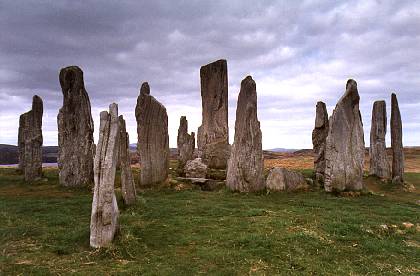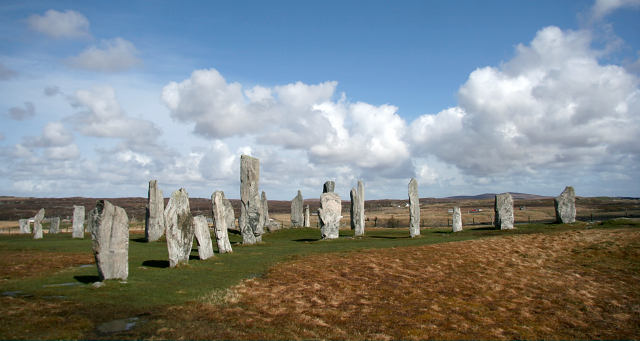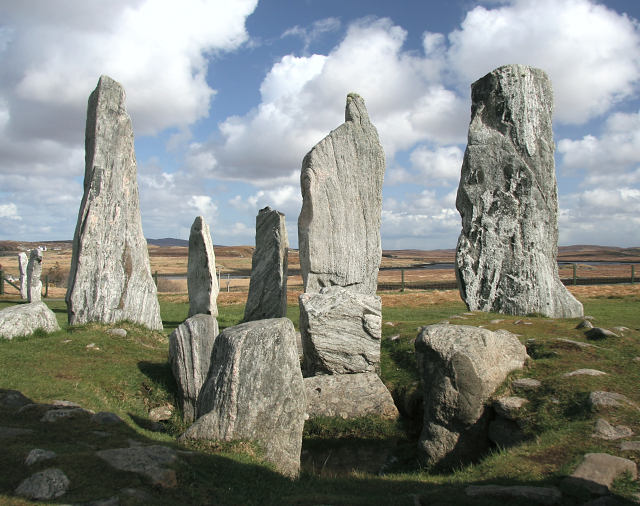Standing Stones of Callanish
a.k.a. Callanish I

Callanish viewed from the north-east
County: Isle of Lewis
NGR NB 213330
Powerful and evocative, the standing stones of Callanish are visible from a distance like quills, erected on a piece of high ground close to the sea.
Close up you see a slightly flattened circle or 12m average diameter, with four avenues
of standing stones (one a double line), tall and slender comprised of  Lewissean
gneiss. This was easily split, the stone shows a layered consistency which almost looks
like wood when you come close-up to the Stones.
Lewissean
gneiss. This was easily split, the stone shows a layered consistency which almost looks
like wood when you come close-up to the Stones.
Close-up of one of the stones showing the layered Lewissean gneiss

viewed from the south, you can make out the cross-shape of the alignments

In the centre, there is a cairn of stone slabs, probably of later origin than the circle
Panorama of Callanish stones - drag to spin view
This 'bird's eye view' (after the Historic Scotland board at the site) shows the circle at the centre of a skewed cross. A plan view shows how skewed the 'tail' of the cross is.

Bird's eye view of the Standing Stones of Callanish
The rough outline of the development of the Standing Stones from an archaeological perspective is
~3000BC or
(~2200BC
Heather grows over the cultivated ridges. The stone circle and the large monolith are erected around this time.
Heather once more grows over the site. A small stone crypt is placed in the middle of the stone circle.
The crypt is added to, developing into a chambered cairn with many cremated bodies buried with broken pottery. (Broken pottery was a frequent theme of Stone Age burials. It may have been deliberately broken symbolising the passage into the Otherworld)
1550 BC
the three short stone rows are added to the circle and cairn
1500~1000 BC
The chambered cairn was emptied and ploughing took place around the cairn. Later on a house was built in front of it
800 BC
Peat started to grow around the site. When the last of it was removed in 1857 the peat was 1.5m deep
Alignments
Callanish has two alignments of particular significance - the short rows, with the western row aligned towards the sunset at the vernal equinox, and the Pleiades rising in line with the ENE row at Beltane when the rows were constructed around 1550BC.